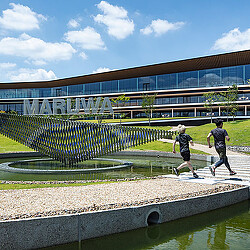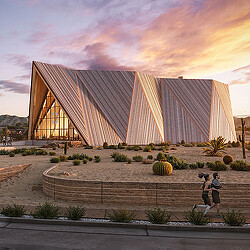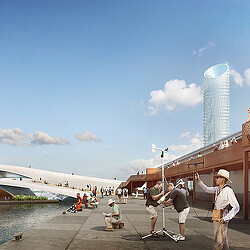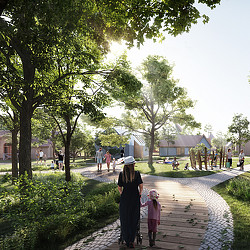The Uncertainty of Electric Power:
A View from Houston
Through innovative design, regulatory support, and community participation, we can enhance our resilience to extreme weather events and ensure a more stable energy supply.
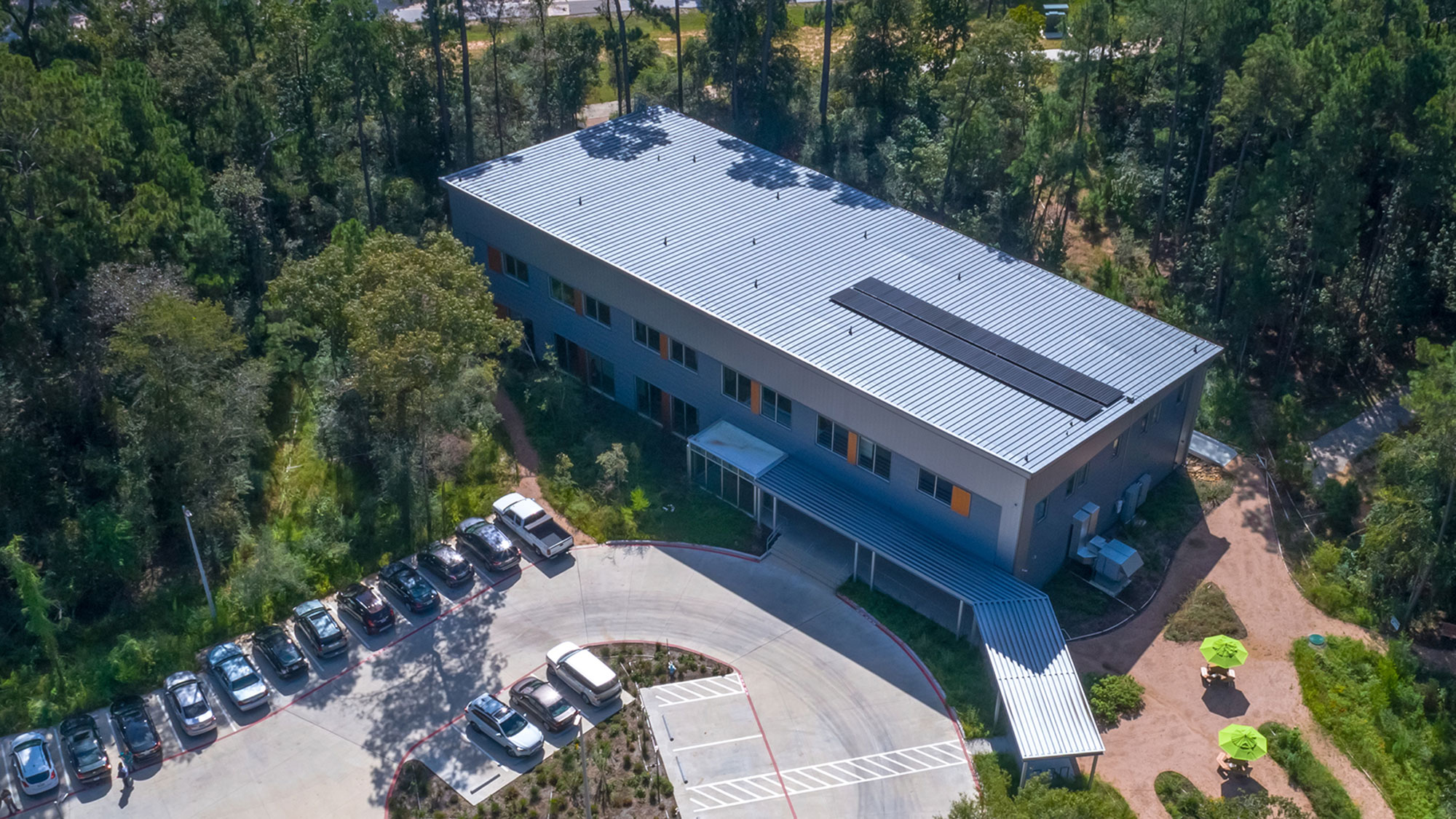
Among the devastation wrought by the recent wildfires in Los Angeles, the fires caused significant damage and public safety shutoffs to the power grid, resulting in outages for hundreds of thousands of people. Meanwhile, a deep freeze across the eastern U.S. sent demand on the country’s largest electric grid soaring to an all-time winter high, while an arctic blast in Texas tested the state’s power supply. These events are yet another example of the extreme weather that is manifesting in many different ways around the world and stressing critical infrastructure like electricity grids.
In an era where extreme weather events are increasingly common, their impact on our quality of life and business continuity is undeniable. According to Gensler’s 2024 Global Climate Action Survey, 76% of respondents reported experiencing disruptions from severe weather, underscoring a growing global concern.
Living in Texas, a state with its own electricity grid, I’ve witnessed these effects firsthand. In 2024, the state experienced a surge in extreme weather events, from record-breaking heatwaves to hurricanes and devastating floods. These events disrupt quality of life, damage infrastructure, and pose significant challenges to businesses striving to maintain operations. Our survey highlights that severe weather is not just an environmental issue but a global public health crisis, with 43% of those surveyed reporting considerable impacts on their mental health and 40% on their physical health.
In North America, climate challenges such as extreme temperatures, windstorms, and recent wildfires are shifting our power supply from reliable to uncertain. We have long taken for granted the availability of electricity for daily activities like cooking, refrigeration, and heating water. However, our power grids have become increasingly unpredictable.
Globally, the situation mirrors these challenges. Extreme weather events are reshaping communities and economies, forcing businesses to rethink their strategies for resilience and continuity. Our survey reveals that most people believe their communities are not adequately prepared to withstand the impacts of climate change.
In many parts of the world, limited power availability has been a long-standing problem, with just a few hours of electricity each day. Not only does this impact residents’ quality of life; it ultimately affects the economic viability of these communities. Despite these challenges, people have adapted their lifestyles to cope with limited power, viewing grid power as a precious resource and supplementing it with technologies like solar photovoltaics and batteries.
Business and Quality of Life Continuity
In a relatively short period, we have shifted from electric power ubiquity to electric power uncertainty. Texas, despite its rapid growth in the past five years, has not adequately addressed these grid challenges.
Uncertainty in power availability is antithetical to long-term investment, growth, and quality of life. Power outages can last for indeterminate periods, bringing the economy to a halt. Often these issues are due to limited capacity, fragile distribution networks, severe weather occurrences, or opposition to alternative energy regulations. Predictable power availability is crucial for a community’s financial, educational, and business success.
Alternative Energy Sources
Along the Gulf Coast, there has been a focus on providing backup power for homes and offices through a system called standby generation, which often uses natural gas combustion. While this offers a short-term solution, it can worsen climate challenges with its reliance on diesel or gas generators that emit significant amounts of CO2 and other greenhouse gases.
Battery storage provides a short-term solution. Although battery storage technology is advancing, it still relies on an outdated energy grid. This uncertainty has prompted many homeowners to navigate both the investment and installation of solar panels and battery systems themselves, with mixed results. Even data centers and mission critical facilities are exploring renewable energy, batteries, and local microgeneration, including cogeneration with natural gas or potentially nuclear power in the future.
A New Definition of Everyday Resilience
Gensler’s 2024 Global Climate Action Survey alerts us to the fact that the most prevalent backlash of extreme weather events is the disruptions they create in people’s energy/electricity distribution — not just in Houston, but globally.
Achieving everyday resilience in electricity generation and distribution is likely the challenge of this century. It’s an issue of quality of life, business continuity, and being well-prepared. From hospital closures to business disruptions to being able to refrigerate life-saving medicines or power a family member’s respirator, avoiding these disruptions requires new and innovative design thinking along with regulatory and community support. Importantly, it relies on greater public awareness to inform and motivate simple, everyday behavioral shifts.
Here are some critical considerations for achieving a more resilient energy supply and distribution:
- Climate-Tailored Building Solutions: To ensure optimal performance and sustainability, it is best practice to tailor the building envelope to the specific climate zone. This involves using appropriate materials and construction techniques to address the unique environmental challenges of the location. For example, in colder climates, focus on airtightness and insulation to retain heat, while in warmer climates, prioritize reducing solar heat gain, and in humid climates, look to enhance natural ventilation. By doing so, buildings can achieve greater energy efficiency, resiliency, and overall preparedness for extreme weather.
- Independent Microgrids: The installation of microgrids can substantially improve resiliency in our electrical distribution. Because they are localized, microgrids can operate independently from the main grid, providing power during outages and enhancing overall grid resilience. These microgrids can plug into renewable energy sources like solar and wind, adding value by providing communities with greater energy independence.
- Backup Batteries and Essential Systems: In the event of natural disasters or severe weather, backup batteries provide a continuous power supply during grid outages. Depending on their capacity, backup batteries can ensure that essential systems like lighting, heating, cooling, and medical equipment remain operational, allowing critical operations to continue.
- Real-Time Supply and Demand Data: When it comes to understanding the power grid, Texas is fortunate to have the Electric Reliability Council of Texas (ERCOT). As an open-source network, ERCOT manages the flow of electric power and leverages clean energy sources like wind and solar into the power grid. Programs like this, with an easy-to-use website, supply the community with just-in-time information on location-specific quantities and sources of energy being distributed, whether it be wind, solar, or natural gas. When consumers can see real-time supply and demand on the grid, they know how to modify use patterns, prepare for outages, and preemptively adapt behaviors to avoid overwhelming the power supply.
Achieving resilience in electricity generation and distribution is a complex challenge that requires innovative design, regulatory support, and community participation. Public awareness and behavioral shifts are crucial, empowering individuals to contribute to a more sustainable future. Preparedness plays a vital role in mitigating disruptions, allowing communities to better withstand and recover from extreme weather events, which ultimately promotes business continuity and safety for all.
By optimizing building design, implementing microgrids, investing in backup systems, and providing real-time data on energy supply and demand, we can enhance our resilience to extreme weather events and ensure a more stable energy supply.
For media inquiries, email .


